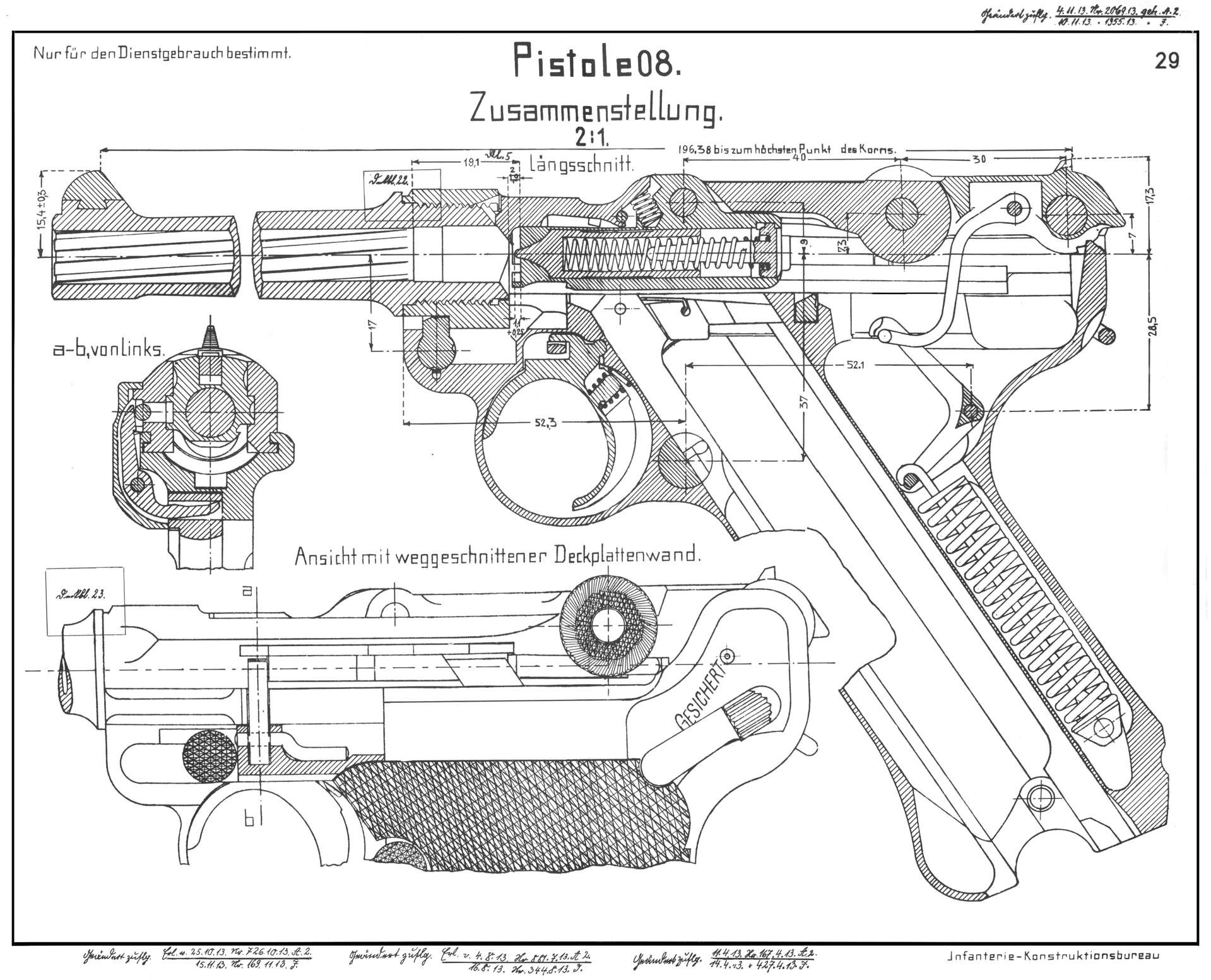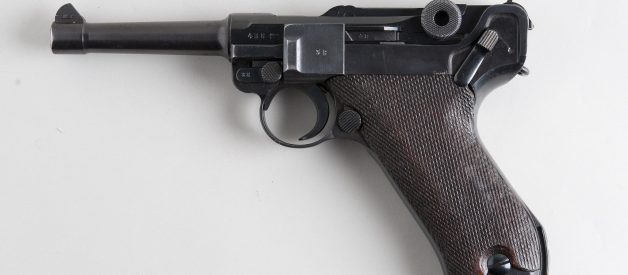The Luger P08 has a sinister reputation, but it?s really just an innovative pistol
by PAUL HUARD
The ancient Romans had a saying. Si vis pacem, para bellum??If you want peace, prepare for war.?
George Luger took that statement seriously. The result was a pistol known for its accuracy, the ammunition it introduced to the militaries of the world and the evil reputation it later gained.
The P08 nine-millimeter Parabellum?or Luger?pistol was the brainchild of its namesake inventor, and it served Germany faithfully during both world wars. Often associated with the Nazi regime, it was the handgun of the Kaiser?s Soldaten before Hitler took power.
Yet it?s more closely associated with the latter. If you watch a World War II movie, you almost expect a barking Gestapo officer to start frantically waving a Luger around.

?From its adoption, the Luger was synonymous with the German military through the end of World War II,? Aaron Davis wrote in The Standard Catalog of the Luger. ?Ask any World War II vet of the [European Theater of Operations] what the most prized war souvenir was and the answer will invariably come back, ?a Luger.??
Although chambered for several calibers, the most common Luger model used nine-millimeter Parabellum ammunition, a caliber that swept the world after World War I, and which owed its name to the Latin saying.
Armies around the world still use this round in various submachine guns. It?s also the round fired by the Beretta M-9 pistol, currently the official sidearm of the United States military.
 At top and above?Luger pistols. Thomas Quine, Askild Antonsen/Flickr photos
At top and above?Luger pistols. Thomas Quine, Askild Antonsen/Flickr photos
The Luger is a recoil-operated, locked breech, semi-automatic handgun with an eight-round capacity. It has a unique toggle-lock action, which uses a jointed arm to lock the weapon, instead of the slide action used by almost every other semi-auto pistol in the world.
Luger got his initial idea for the pistol from Hugo Borchardt, designer of the bizarre-looking C-93. Borchardt?s pistol was powerful and accurate, but heavy, awkward to hold and very expensive to produce. Luger took the complex toggle-lock action, simplified it, angled the pistol grip at 55 degrees?to make the weapon more comfortable to hold?and produced the gun in a smaller package.
The Luger Model 1900 was the first weapon engraved with the letters DWM?for the Berlin manufacturer Deutsche Waffen und Munitionsfabriken?indicating the point of origin for all early models of the pistol.
The Swiss first purchased the Luger Model 1900, originally chambered in 7.65 millimeter. By 1906, DWM made pistols for Brazil, Bulgaria, Holland, Portugal and Russia.
The U.S. Army even briefly considered the Luger before turning to the M1911 .45-caliber pistol. However, other customers?including the German navy?wanted a bigger round. By 1908, the classic nine-millimeter Luger was the standard, hence the designation Pistole 1908.
The Luger remained the standard service pistol of the German army until 1938, when the Walther P-38 nine-millimeter pistol entered service. Despite its good technical reputation, the Luger is still a complicated machine with several downsides.
When the pistol?s breech is open, the jointed arm sits at an acute angle?the kind of mechanics that make the pistol susceptible to malfunctions because of fouling.
In fact, the Browning Hi-Power became the Luger?s greatest competitor, because of the Browning?s simplicity?which mattered to soldiers who had to field-strip and clean the handgun in the field.
Yet, the Luger has a reputation for toughness and accuracy that obviously served German soldiers well. Lugers from the early 20th century are particularly well-made, built to standards so exacting that many P08s that first saw service during World War I were completely usable during World War II and beyond.
 One of the original blueprints of the P08 pistol. Public domain photo
One of the original blueprints of the P08 pistol. Public domain photo
Luger P08s were highly prized trophies of war. Allied soldiers captured thousands of them?and several episodes of the HBO mini-series Band of Brothers highlights an American soldier?s quest to obtain one.
Stars & Stripes cartoonist Bill Mauldin referenced the Luger in one of the most popular images of the war. In his cartoon, one German prisoner says to another German prisoner, ?Luger, $100 ? camera, $150 ? Iron Cross, $12 ? It is good to be captured by Americans!?
However, the Germans quickly realized they could kill or wound trophy-seeking soldiers by wiring discarded Lugers on the battlefield to hand grenades or mines, making the pistol a potentially deadly souvenir.
But the Luger was its own worst enemy. Like a lot of German military hardware, it was expensive to produce?one of the reasons why Hitler?s army turned to the less-expensive Walther.
After World War II, the Swiss stopped using the Luger. Other countries soon followed. But collectors have always valued the pistol. It screams ?bad-boy gun? because of its Nazi past, and rarer Lugers such as the ones chambered for the 7.65-millimeter round sometimes sell in excess of $1,200.
Buy ?Gun Digest Book of Classic Combat Handguns.?
So, the Luger mystique continues to this day because of its long history, unforgettable association with the Third Reich and sheer numbers.
?Regardless of the fact it is no longer produced, the Luger is not a has-been by any means,? Dan Shideler wrote in the Gun Digest Book of Classic Combat Handguns. ?Over a period of 40 years, millions were produced and they are in the hands of people all over the world.?








